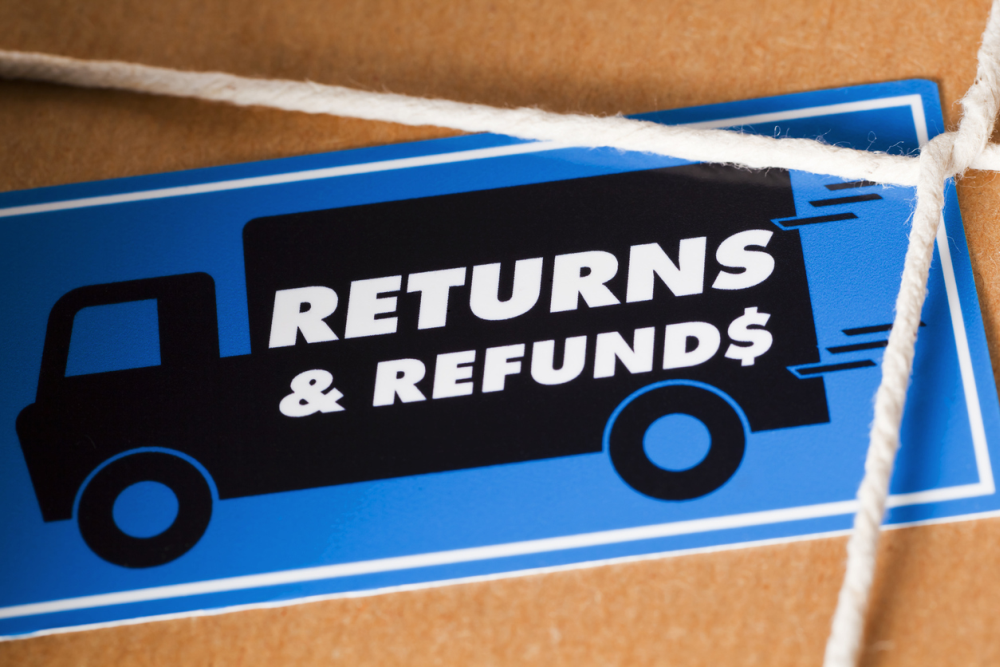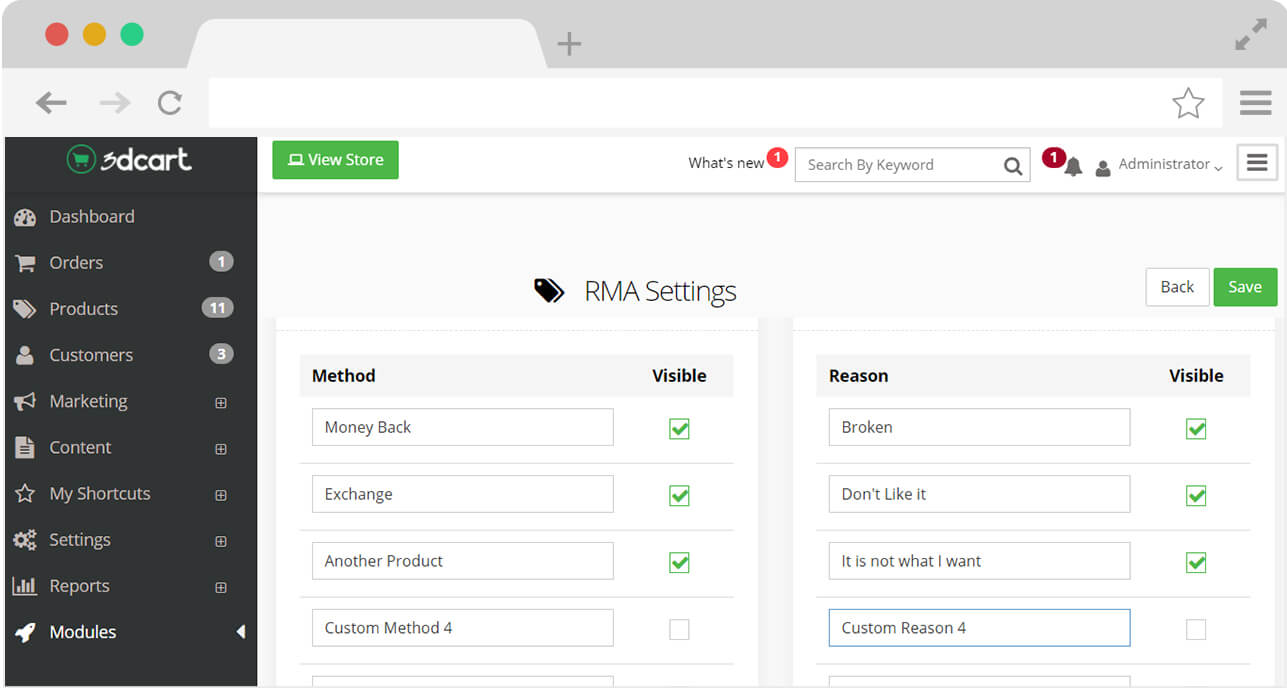
Working in the world of eCommerce has its limitations, and part of your job as an online store owner is to overcome them. One such limitation revolves around the simple fact that a shopper doesn’t get to physically look at, or feel a product before making a purchase. In an effort to compensate for this, online store owners can create a return policy that’s succinct, informative, engaging and easy to understand.
Your eCommerce return policy is crucial for making returns and exchanges easy for both you and the customer. The clearer your return, exchange, and refund policies, the better. Every small business needs a well-written return policy for best results.
When writing a return policy for your eCommerce website, there are a few things to keep in mind. We'll cover them all in this guide.
Overview of return policies
A return policy is an absolute necessity for successfully running an eCommerce website. It will help you provide quality customer service, and make it easier to handle returns by enforcing consistency. Writing one takes these steps:
- 1. Determine the timeframe during which you'll accept returns
- 2. Determine the acceptable condition of the item
- 3. Create steps for the customer to follow (e.g. performing their return through an RMA)
- 4. Write the policy following the guidelines below.
By following these steps, you'll become aware of your business's requirements for your return policy and be able to create one that works for you and makes sense for your customers.
Table of Contents
What is a return policy?
A return policy is a document that describes, in detail, your business's process and requirements for accepting returns. It also covers what customers should expect, and how they should go about initiating a return. Your return policy helps protect your business from inappropriate returns and credit card chargebacks that could cause financial loss, and provides a guideline that helps both you and your customers follow a consistent process. A great return policy is balanced to ensure your business isn't too disadvantaged by returns while keeping your customers as satisfied as possible.

Requirements of a return policy
Every return policy needs to cover a few points to help customers understand the limits and allowances your business places on returns. This is the "meat" of your return policy, as this information describes what you'll accept from customers, and how you'll refund them.
Stipulate a time frame for returns
It’s important to let your customers know how long they have to return a product. Generally speaking, 15-30 days is standard, although some businesses opt for 90 days. Either way, you won’t be doing yourself any favors by accepting returns beyond that time.
Fail to disclose a time frame for returns and you’ll find customers trying to ship back items months, even years (not kidding), after they’ve been purchased. Needless to say, this is not a good thing for online store owners. Several large businesses have suffered losses due to open-ended return periods, to the point that most have introduced stricter rules.
Define the expected condition of returns
It’s one thing to accept a return if the customer is immediately unhappy with a product or the product is defective. It’s quite different to accept a return if a product has been used, broken or devalued in any way by the buyer.
When structuring your company's return policy, define the condition a product must be in before a return can be processed. If you fail to include this information, customers will attempt to return merchandise in condition too poor to be resold. In this case, you’ll be forced to take a loss.
List return requirements
If you have requirements that must be met before a return can be processed, you need to let customers know ahead of time.
For example, you may want to stipulate that all returns must be sent unopened and/or in its original packaging. You should also let customers know if they need an authorization number, shipping address, purchase receipt, etc. Whatever conditions you choose, state them clearly for all to see.
One simple way to handle this is to use a Return Merchandise Authorization (RMA) system. This allows you to request information and images from the customer. If you decide to accept the return, you issue an authorization. If your business covers return shipping, you’ll send the customer a shipping label along with the authorization.
Choose refund or in-store credit
Customers want to know how you plan to compensate them before they return a product. Many will demand a full refund while others may settle for in-store credit. As an e-store owner, you need to make a choice between the two.
We suggest offering customers a full refund on all returned merchandise so long as it meets the requirements of your return policy. At your discretion, you can decide to offer store credit for certain types of returns. If you decide to do this, make sure you explain the exact circumstances in your policy. Used properly, store credit can simplify and enhance your returns process.
If you elect to offer in-store credit only, however, many of your current and future customers will not be happy.

How to write a return policy
Return policies don't just need to include the details — they must also present them in a clear, concise manner that helps prevent misunderstandings. Your return policy should cover every detail without becoming overly technical.
Keep the language simple and to the point
The general rule of thumb here is it to write like you speak. If you’re not a lawyer, don’t act like it. Use verbiage your customers can relate to, and feel free to give your return policy some personality. So long as it's clear, concise and not open for interpretation, you’re good to go.
Filling your return policy with complicated language and/or legal jargon will only confuse your customers and lead to an increase in service requests. This costs time and money that could have easily been saved by having an awesome return policy in place.
Disclose any fees associated with returns
When a shopper wants to return an item they’ve purchased in your store, who will cover the cost of return shipping, restocking, etc.? Things like this need to be clearly defined in your return policy.
There's nothing worse, from a consumer's perspective, than receiving a product you don't like only to find out that you have to pay out of pocket to send it back.
If you expect your customers to assume financial responsibility for returned items, make sure this is clearly spelled out inside your policy. Failing to do so will create a gaggle of upset customers armed with keyboards ready and Twitter accounts wide open.
Promote your policy
A return policy is only as good as its visibility. If no one can find it, then it doesn’t exist, and that spells trouble for online owners.
It’s always a good idea to feature your return policy on the homepage of your website. The footer is a popular spot for this and some even like making it a part of the checkout process.
In addition to homepage placement, we suggest you do the following two things. First, include a printed copy of your return policy inside every package you ship. Second, feature your policy inside the purchase-confirmation email you send to customers.

One last thing…
Think of your return policy as an extension of your company. It should represent your business' core philosophies, attitude and tone. Your return policy could very well be the most-read document on your website. It’s not just a way of explaining your return requirements and process, but also a means of making a good impression.
When creating your company's return policy, take your time and come up with a game plan. In other words, map out what you want to do before doing it. Brainstorm ideas, do some research, write a few drafts and ask for advice. Read the return policies of successful businesses and look at return policy templates. Take what you’ve learned and use it to create an awesome return policy that fits your business.
When all things are said and done, you'll be left with a policy that will save you time and money, and who on this planet couldn't use a little more of both?
Shift4Shop provides a great automated Return Policy Generator to help with this process. We’ve also written a free eBook that will help you handle returns like a champion — check it out below the FAQ.





Leave a reply or comment below